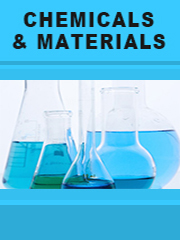Report overview
Glass Filled PP Compound is manufactured by compounding Polypropylene Homo-Polymer with fine grade of Glass, with suitable grade of processing Aid, Heat stabilizer and Anti-oxidant. Additives like antioxidant, lubricant, processing aid and desiccant are added to improve long term thermal mechanical properties and processability. The compounds used directly or diluted with desired grades of polypropylenes show good dispersibility and excellent balance of properties in the ultimate product.
This report aims to provide a comprehensive presentation of the global market for Glass Filled Polypropylene, with both quantitative and qualitative analysis, to help readers develop business/growth strategies, assess the market competitive situation, analyze their position in the current marketplace, and make informed business decisions regarding Glass Filled Polypropylene. This report contains market size and forecasts of Glass Filled Polypropylene in global, including the following market information:
Global Glass Filled Polypropylene Market Revenue, 2018-2023, 2024-2035, ($ millions)
Global Glass Filled Polypropylene Market Sales, 2018-2023, 2024-2035, (Kiloton)
Global top five Glass Filled Polypropylene companies in 2022 (%)
The global Glass Filled Polypropylene market was valued at US$ million in 2022 and is projected to reach US$ million by 2035, at a CAGR of % during the forecast period. The influence of COVID-19 and the Russia-Ukraine War were considered while estimating market sizes.
The U.S. Market is Estimated at $ Million in 2022, While China is Forecast to Reach $ Million.
Long Fiber Segment to Reach $ Million by 2035, with a % CAGR in next six years.
The global key manufacturers of Glass Filled Polypropylene include SABIC, Repsol, RTP Company, Mitsui Chemicals, Washington Penn Plastic, Ravago, PolyPacific, Asahi Kasei Plastics North America and Avient Corporation, etc. in 2022, the global top five players have a share approximately % in terms of revenue.
We surveyed the Glass Filled Polypropylene manufacturers, suppliers, distributors and industry experts on this industry, involving the sales, revenue, demand, price change, product type, recent development and plan, industry trends, drivers, challenges, obstacles, and potential risks.
Total Market by Segment:
Global Glass Filled Polypropylene Market, by Type, 2018-2023, 2024-2035 ($ Millions) & (Kiloton)
Global Glass Filled Polypropylene Market Segment Percentages, by Type, 2022 (%)
Long Fiber
Short Fiber
Global Glass Filled Polypropylene Market, by Application, 2018-2023, 2024-2035 ($ Millions) & (Kiloton)
Global Glass Filled Polypropylene Market Segment Percentages, by Application, 2022 (%)
Automotive
Appliances
Furniture
Others
Global Glass Filled Polypropylene Market, By Region and Country, 2018-2023, 2024-2035 ($ Millions) & (Kiloton)
Global Glass Filled Polypropylene Market Segment Percentages, By Region and Country, 2022 (%)
North America
US
Canada
Mexico
Europe
Germany
France
U.K.
Italy
Russia
Nordic Countries
Benelux
Rest of Europe
Asia
China
Japan
South Korea
Southeast Asia
India
Rest of Asia
South America
Brazil
Argentina
Rest of South America
Middle East & Africa
Turkey
Israel
Saudi Arabia
UAE
Rest of Middle East & Africa
Competitor Analysis
The report also provides analysis of leading market participants including:
Key companies Glass Filled Polypropylene revenues in global market, 2018-2023 (Estimated), ($ millions)
Key companies Glass Filled Polypropylene revenues share in global market, 2022 (%)
Key companies Glass Filled Polypropylene sales in global market, 2018-2023 (Estimated), (Kiloton)
Key companies Glass Filled Polypropylene sales share in global market, 2022 (%)
Further, the report presents profiles of competitors in the market, key players include:
SABIC
Repsol
RTP Company
Mitsui Chemicals
Washington Penn Plastic
Ravago
PolyPacific
Asahi Kasei Plastics North America
Avient Corporation
The Plastics Group of America
Borealis AG
Sumitomo Chemicals
Trinseo
RheTech
Outline of Major Chapters:
Chapter 1: Introduces the definition of Glass Filled Polypropylene, market overview.
Chapter 2: Global Glass Filled Polypropylene market size in revenue and volume.
Chapter 3: Detailed analysis of Glass Filled Polypropylene manufacturers competitive landscape, price, sales and revenue market share, latest development plan, merger, and acquisition information, etc.
Chapter 4: Provides the analysis of various market segments by type, covering the market size and development potential of each market segment, to help readers find the blue ocean market in different market segments.
Chapter 5: Provides the analysis of various market segments by application, covering the market size and development potential of each market segment, to help readers find the blue ocean market in different downstream markets.
Chapter 6: Sales of Glass Filled Polypropylene in regional level and country level. It provides a quantitative analysis of the market size and development potential of each region and its main countries and introduces the market development, future development prospects, market space of each country in the world.
Chapter 7: Provides profiles of key players, introducing the basic situation of the main companies in the market in detail, including product sales, revenue, price, gross margin, product introduction, recent development, etc.
Chapter 8: Global Glass Filled Polypropylene capacity by region & country.
Chapter 9: Introduces the market dynamics, latest developments of the market, the driving factors and restrictive factors of the market, the challenges and risks faced by manufacturers in the industry, and the analysis of relevant policies in the industry.
Chapter 10: Analysis of industrial chain, including the upstream and downstream of the industry.
Chapter 11: The main points and conclusions of the report.
